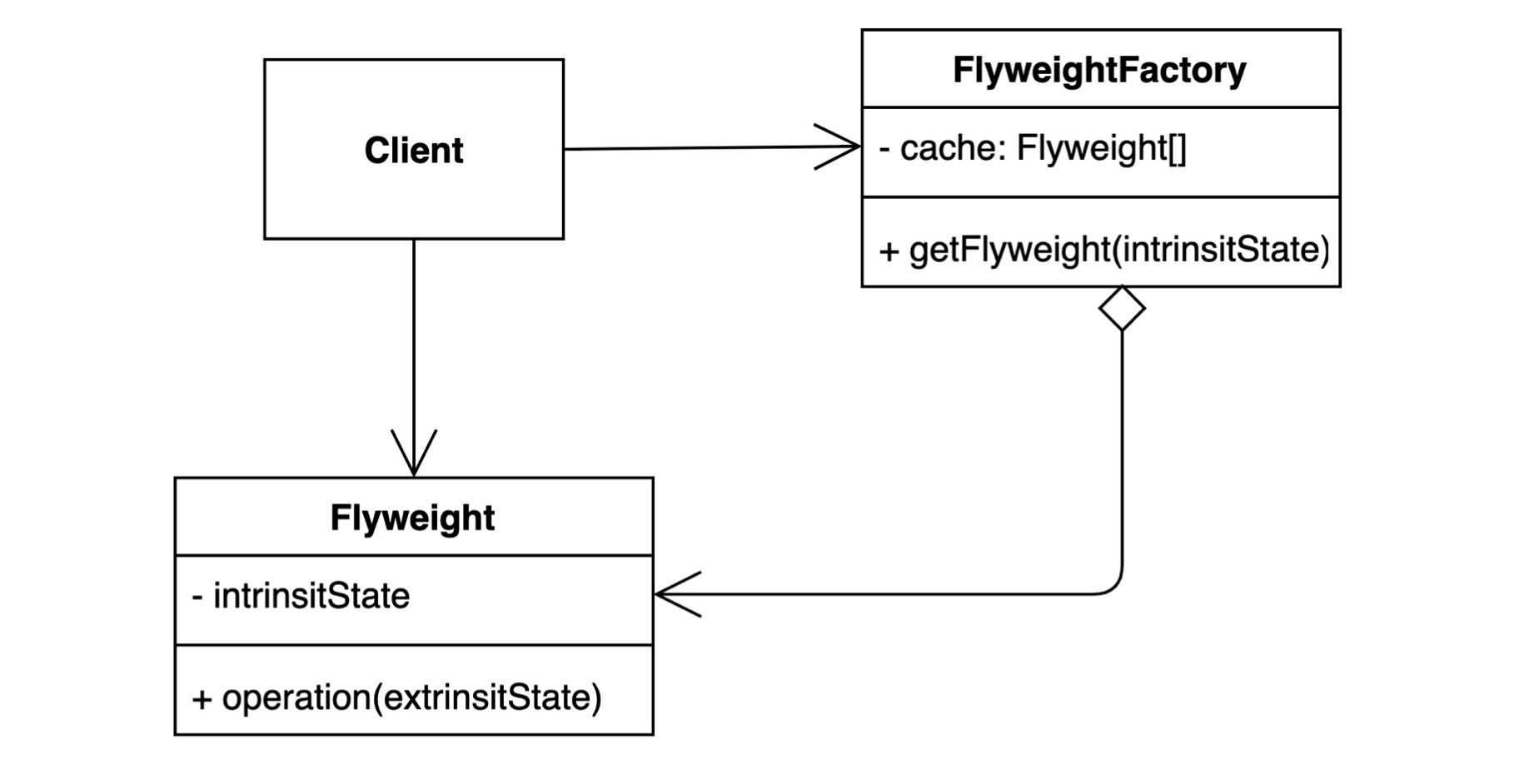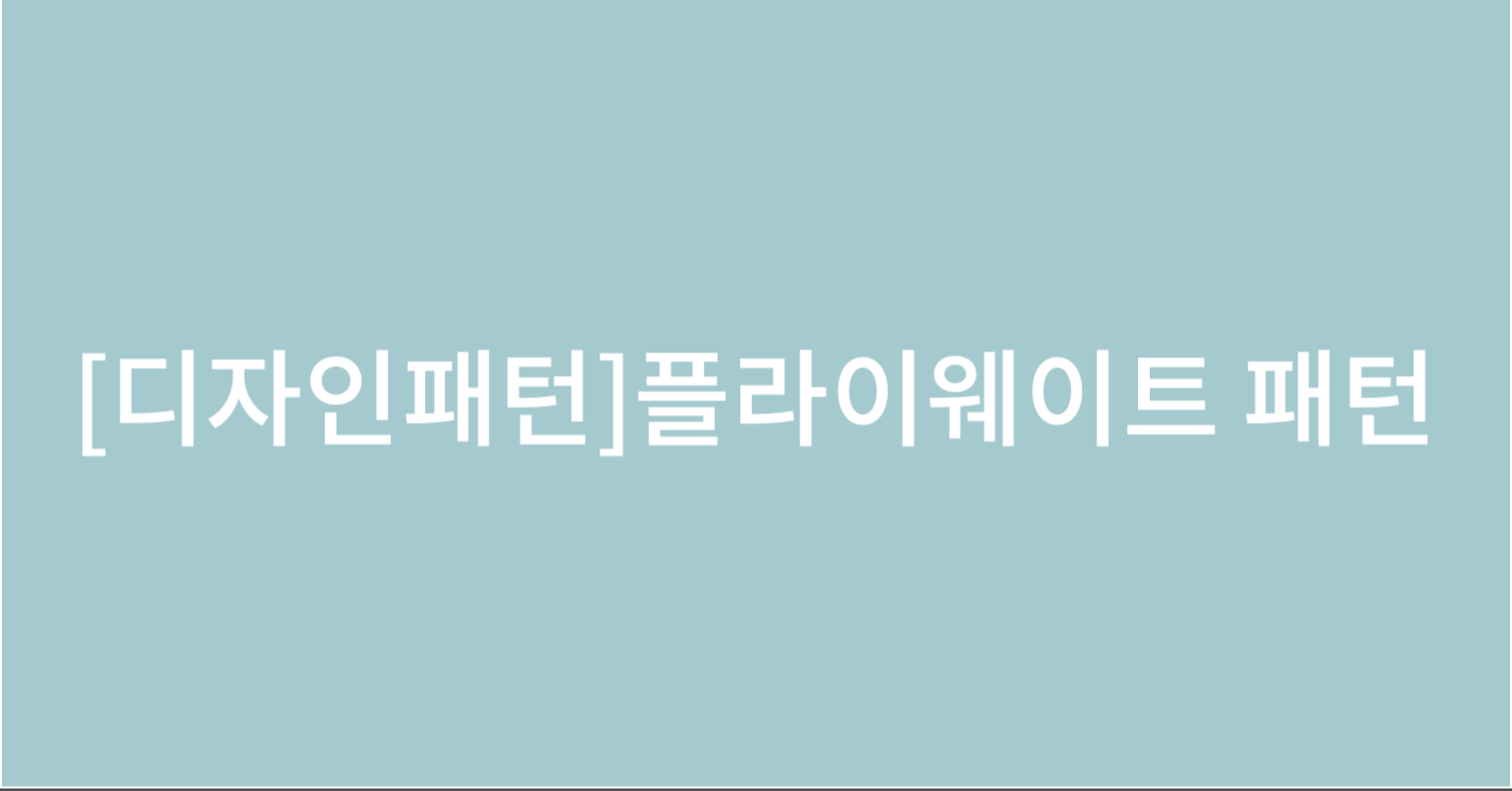Flyweight(플라이웨이트) 패턴
Flyweight패턴이란?
플라이웨이트 패턴은 어떤 클래스의 인스턴스 한 개만 가지고 여러 개의 가상 인스턴스를 제공하여 객체를 가볍게 만들어 메모리 사용을 줄이는 패턴입니다.

자주 변하는 속성(또는 외적인 속성, extrinsit)과 변하지 않는 속성(또는 내적인 속성, instrinsit)을 분리하고 재사용하여 메모리 사용을 줄일 수 있다.
Flyweight패턴의 예제는 아래와 같습니다.
Before
public class Character {
private char value;
private String color;
private String fontFamily;
private int fontSize;
public Character(char value, String color, String fontFamily, int fontSize) {
this.value = value;
this.color = color;
this.fontFamily = fontFamily;
this.fontSize = fontSize;
}
}public class Client {
public static void main(String[] args) {
Character c1 = new Character('h', "white", "Nanum", 12);
Character c2 = new Character('e', "black", "Nanum", 12);
Character c3 = new Character('l', "white", "Nanum", 12);
Character c4 = new Character('l', "black", "Nanum", 12);
Character c5 = new Character('o', "white", "Nanum", 12);
}
}위와 같이 문자를 객체화 시켜 만드는 작업을 한다고 가정한다면 해당 객체의 필드를 플라이웨이트 패턴을 사용하여 경량화 할 수 있습니다.
After
public class Character {
private char value;
private String color;
private Font font;
public Character(char value, String color, Font font) {
this.value = value;
this.color = color;
this.font = font;
}
}
//불변한 객체
public final class Font {
private final String fontFamily;
private final int size;
public Font(String fontFamily, int size) {
this.fontFamily = fontFamily;
this.size = size;
}
public String getFontFamily() {
return fontFamily;
}
public int getSize() {
return size;
}
}
public class FontFactory {
private Map<String, Font> cache = new HashMap<>();
public Font getFont(String font) {
if (cache.containsKey(font)){
return cache.get(font);
}else{
String[] split = font.split(":");
Font newFont = new Font(split[0], Integer.parseInt(split[1]));
cache.put(font, newFont);
return newFont;
}
}
}public class Client {
public static void main(String[] args) {
FontFactory fontFactory = new FontFactory();
Character c1 = new Character('h', "white", fontFactory.getFont("nanum:12"));
Character c2 = new Character('e', "black", fontFactory.getFont("nanum:12"));
Character c3 = new Character('l', "white", fontFactory.getFont("nanum:12"));
Character c3 = new Character('l', "black", fontFactory.getFont("nanum:12"));
Character c3 = new Character('o', "white", fontFactory.getFont("nanum:12"));
}
}자주 변하는 속성인 문자값과 색상과 자주 변하지 않는 속성인 폰트체와 글씨크기를 분리합니다.
FontFactory에서 캐시화 된 객체를 반환받아 Character객체를 생성함으로써 메모리 사용을 줄일 수 있습니다.
Flyweight패턴은 자바의 모든 래퍼 클래스의 valueOf()메소드에서 사용하고 있습니다.
래퍼 클래스를 생성할 때 new 키워드를 사용하여 인스턴스를 매번 생성하기 보다는 valueOf()를 통해 생성하는 것이 더 메모리 사용을 줄일 수 있습니다.

